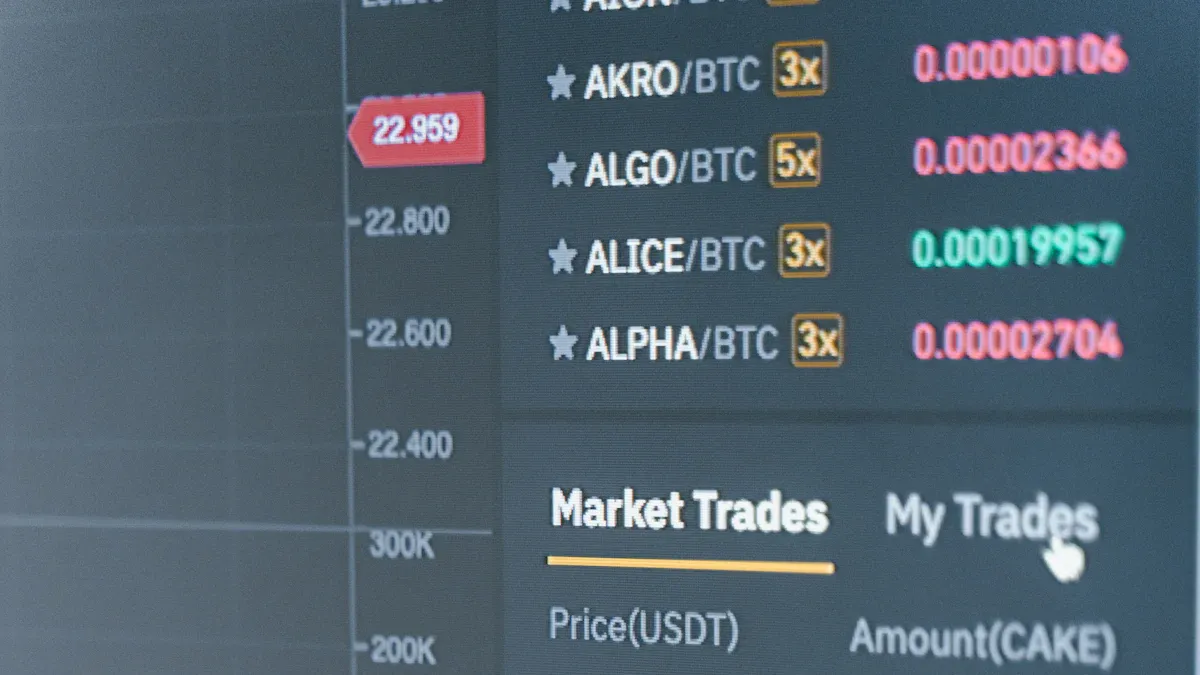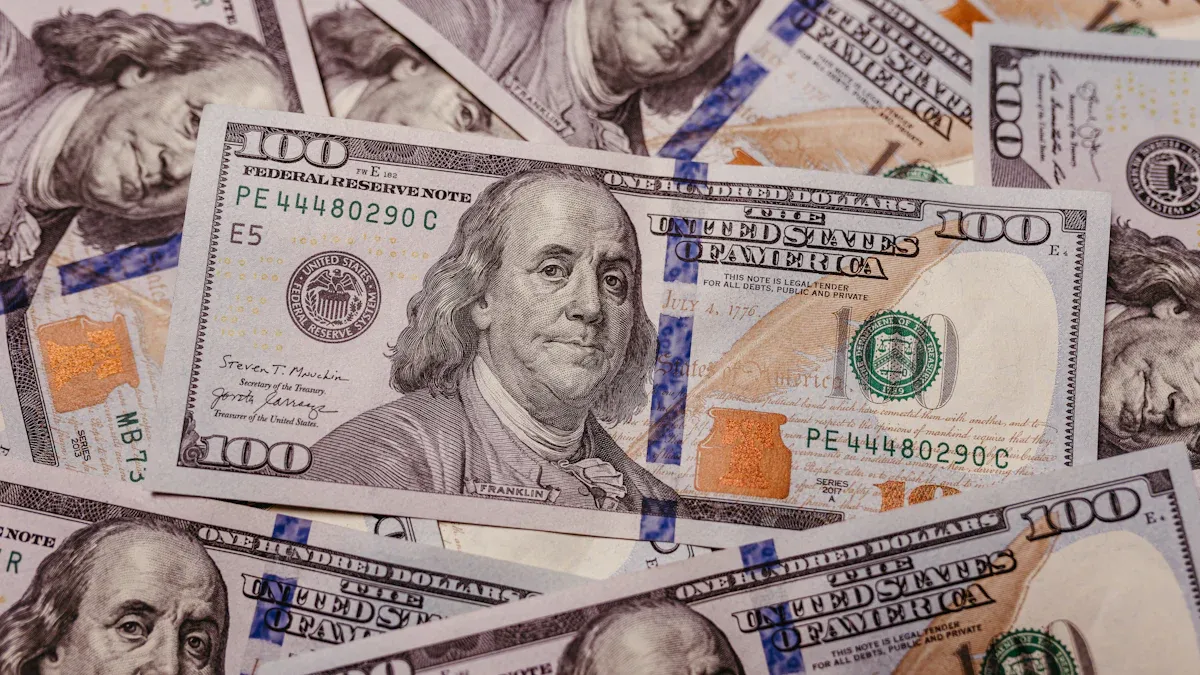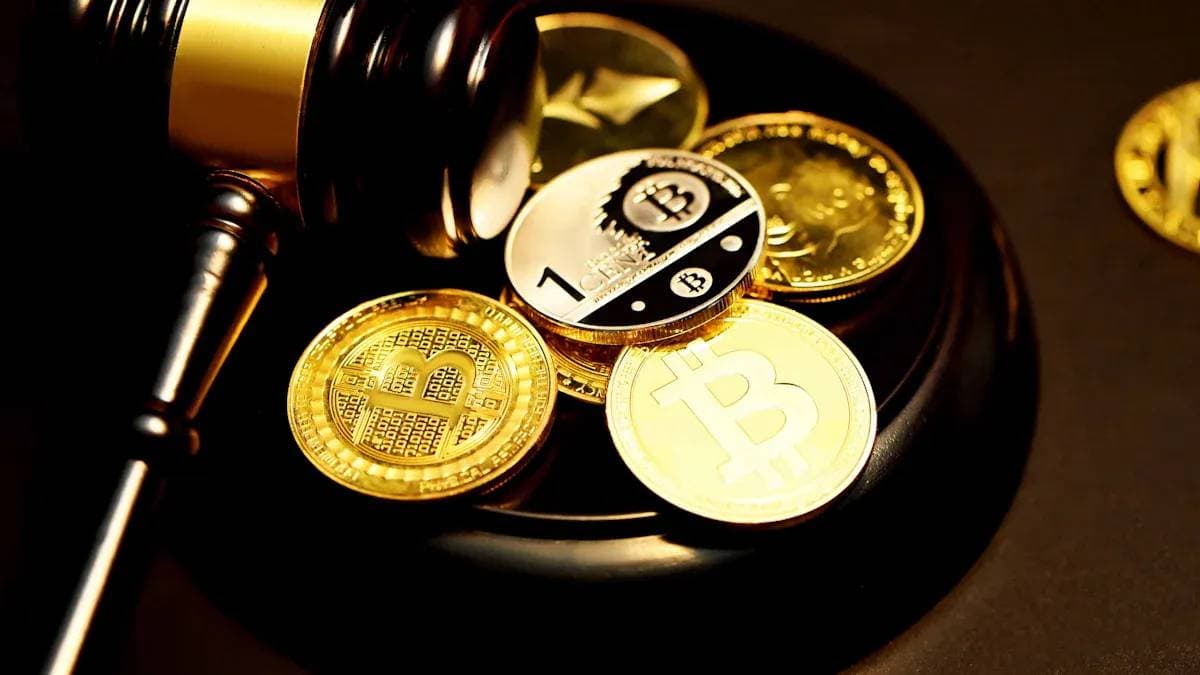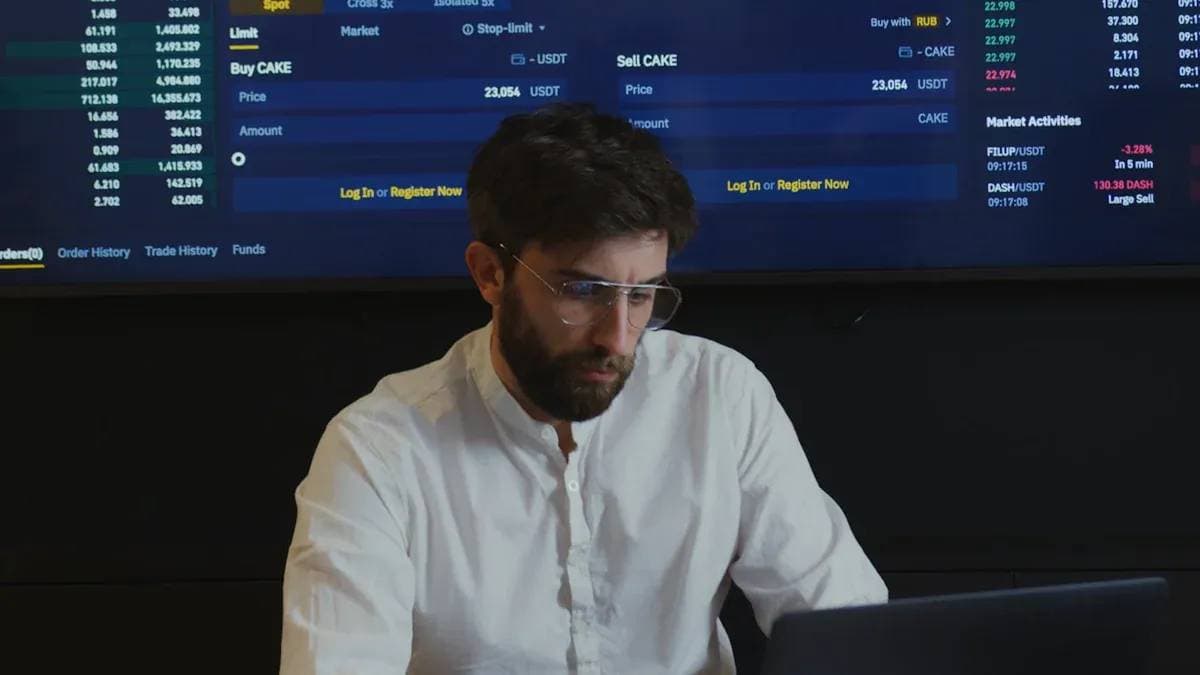- EasyCard
- Trade
- Help
- Announcement
- Academy
- SWIFT Code
- Iban Number
- Referral
- Customer Service
- Blog
- Creator
Stablecoin International Remittance Pitfall Avoidance Guide: How to Safely and Quickly Complete USDT Transfers

Image Source: pexels
Have you ever been frustrated by the high costs and slow speeds of traditional bank international remittances? Stablecoin USDT international remittance provides an efficient, low-cost alternative. It can deliver your funds globally in minutes while significantly reducing fees.
Stablecoin vs. Bank Transfer: Core Advantages Overview
Feature Stablecoin (e.g., USDT) SWIFT / Bank Transfer Transaction Cost Less than $1 on efficient networks $30 - $100, plus intermediary fees Settlement Time Seconds or minutes 2-5 business days
This guide will lead you to complete the entire transfer process safely and efficiently while avoiding potential risks.
Core Highlights
- USDT remittances are faster and cheaper than traditional bank transfers, completing global transfers in minutes.
- Choosing a regulated platform with strong security technology and high user ratings is very important.
- Using a non-custodial wallet and properly storing the seed phrase allows you to fully control your funds.
- When transferring USDT, ensure the sending and receiving network types (such as TRC-20 or ERC-20) are exactly the same; otherwise, funds will be permanently lost.
- Before large transfers, conduct a small-amount test to ensure the address and network are correct.
Preparation: Selecting Platforms and Securing Wallets
Before starting transfers, you need to make two key preparations. The first is selecting a safe and reliable trading platform. The second is creating and hardening your own digital wallet. This is like choosing a reputable bank and preparing a sturdy wallet before a long trip.
Evaluating and Selecting Reliable Trading Platforms
Your first step is the gateway to the crypto world—a trading platform. A good platform is the cornerstone of fund security. When evaluating, you should focus on the following aspects:
- Regulation and Compliance: Check if the platform is licensed in major financial regions. Compliant platforms are usually more transparent and offer better fund protection.
- Security Technology: Understand if the platform stores most user funds in offline “cold wallets.” The platform must also provide basic security features like two-factor authentication (2FA).
- User Reputation: Check real feedback from other users through online communities or review sites. Good reputation and efficient customer service are important indicators of platform reliability.
Regulatory Reminder Countries have varying attitudes toward stablecoins. For example, the United States is gradually establishing a regulatory framework, while mainland China restricts the use of stablecoins for remittances. Therefore, choosing a platform that operates compliantly in major global markets is crucial.
Creating and Hardening Your Digital Wallet
A digital wallet is where you store USDT. It is divided into two main types:
| Wallet Type | Private Key Ownership | Advantages | Disadvantages |
|---|---|---|---|
| Custodial Wallet | Platform holds | Simple operation, suitable for beginners | Funds controlled by platform, counterparty risk exists |
| Non-Custodial Wallet | You hold yourself | Full control over funds, high security | Must manage seed phrase yourself; loss is irrecoverable |
To achieve full control over funds, we strongly recommend using a non-custodial wallet, such as MetaMask or Exodus. After creating the wallet, immediately take the following measures to harden security:
- Backup Seed Phrase: Write down the 12 or 24-word seed phrase on paper. Be sure to store it in a fireproof, waterproof physical safe; never store online or take screenshots.
- Set a Strong Password: Set a unique and complex password for your wallet app.
- Enable Two-Factor Authentication (2FA): Enable 2FA for all associated accounts; it greatly enhances account security.
- Beware of Phishing: Do not click links from unknown sources. Official customer service will never ask for your password or seed phrase.
Stablecoin USDT International Remittance: Step-by-Step Operation Guide

Image Source: pexels
After completing preparations, you can now start practical operations. This section will guide you step by step through purchasing, transferring, and verifying to ensure your funds arrive safely and quickly at the destination. This is an efficient practice of stablecoin USDT international remittance.
Safely Purchasing USDT: Avoiding Pitfalls in C2C Trading
One of the most common ways to acquire USDT is through the C2C (Customer-to-Customer) market on trading platforms. Here, you can trade directly with other users, buying USDT with fiat currency. However, convenience comes with risks. You need to learn to identify and avoid common scams.
- Forged Payment Proof: Scammers send a processed payment screenshot, urging you to release USDT.
- SMS Fraud: Scammers impersonate banks or payment apps to send fake receipt SMS, making you believe payment has arrived.
- Man-in-the-Middle Attack: Scammers contact you outside the platform via other chat tools, providing a non-personal receiving account, diverting your funds.
- Identity Impersonation: Scammers use someone else’s account for trading, which may cause your bank account to be frozen due to involvement with unknown funds.
- Payment Cancellation After Payment: Scammers pay and then claim “technical issues” to request order cancellation, quickly withdrawing their ad so you cannot appeal.
To protect your assets, strictly follow these safety rules during C2C trading:
- Verify Fund Arrival: Be sure to log into your own bank account or e-wallet and confirm funds have arrived with your own eyes. Do not trust any screenshots or SMS notifications.
- Verify Counterparty Identity: Ensure the account name paying you matches the platform’s real-name verification information exactly. Never accept third-party payments.
- Use Platform Communication: Always communicate within the trading platform’s built-in chat tool. This ensures all conversations are recorded as valid evidence in disputes.
- Record All Information: Take screenshots of all transaction steps and communications as primary evidence for appeals if issues arise.
- Do Not Cancel Easily: Once you confirm receipt of payment, do not cancel the order. If the other party claims issues, initiate a platform appeal and let customer service intervene.
Selecting the Optimal Network: TRC-20 vs. ERC-20
USDT exists on multiple different blockchain networks, like the same brand of bottled water sold in different supermarket chains. The two most common networks are Ethereum (ERC-20) and Tron (TRON/TRC-20). Your choice directly affects transfer costs and speed.
| Network Type | Main Features | Fee (Gas Fee) | Arrival Time | Applicable Scenarios |
|---|---|---|---|---|
| TRC-20 (Tron) | Fast speed, extremely low cost | Usually around 1 USDT | Usually within 1 minute | Daily small-amount, high-frequency international remittances |
| ERC-20 (Ethereum) | High security, mature ecosystem | Higher, volatile (5-30 USDT) | Minutes to tens of minutes | Large transfers or interacting with Ethereum ecosystem apps |
For most stablecoin USDT international remittance needs, the TRC-20 network is the most cost-effective choice. Its average transaction confirmation time is less than three minutes, allowing your funds to arrive quickly.
Severe Warning:Network Mismatch = Permanent Asset Loss
USDT on different networks is incompatible. If you send TRC-20 network USDT to an ERC-20 network address, the funds will be permanently lost and irrecoverable. This is like holding a Beijing subway ticket and trying to ride the Shanghai metro—the ticket machine cannot recognize it. Therefore, before transferring, confirm that the sender and receiver networks are exactly the same.
Executing the Transfer: Key Steps and Verification Checklist
Now, let’s enter the core transfer phase. The following are general steps to withdraw USDT from your wallet or exchange to the recipient’s address.
- Obtain and Verify Receiving Address
- First, obtain the USDT receiving address from your recipient. At the same time, be sure to confirm which network the other party requires (e.g., TRC-20).
- Copy the address. Never manually enter it, as addresses are long strings of irregular characters, highly prone to errors.
- Verify Address: Paste the copied address into a secure location like a notepad. Carefully check the first 4 and last 4 characters of the address to ensure they match the original exactly. This step prevents “clipboard hijacking” malware, which automatically replaces your copied address.
- Initiate Withdrawal on Your Platform
- Log into your exchange or wallet, find the “Assets” or “Wallet” option, and click “Withdraw.”
- Select the currency USDT.
- In the “Address” field, paste the receiving address you have repeatedly verified.
- In the “Network” or “Chain” option, select the network exactly matching the recipient’s requirement (e.g., select TRX Tron (TRC20)).
- Enter the amount you wish to transfer. The platform will display the estimated fee and actual arrival amount.
- Final Confirmation and Security Verification
- Before clicking the “Withdraw” button, check all information on the screen one last time: address, network, amount.
- Enter your transaction password, email verification code, or Google Authenticator (2FA) code as required by the platform to complete security verification.
Best Practice:Conduct Small-Amount Testing
If this is your first transfer to this address or you are about to make a large transfer, strongly recommend a “small-amount test” first. Send a very small amount (e.g., 10 USDT) transfer, confirm the recipient successfully receives it, then proceed with the large operation. This is the most effective way to control risks.
By following the above steps, you can safely and accurately complete a stablecoin USDT international remittance.
Receiving and Cashing Out: Multiple Paths for Safe Landing

Image Source: pexels
Once your USDT arrives at the designated wallet, the next step is to safely convert it to the fiat currency you need. This process is called “cashing out” or “withdrawal.” The following are two mainstream paths, each with its features and security considerations.
Confirm Arrival: How to Check Transaction Status
Before any operations, you first need to confirm that USDT has successfully arrived. The advantage of blockchain is its transparency; every transaction has a unique “digital receipt” called a transaction hash (TxID).
You can check transaction status through the following steps:
- Obtain TxID: Have the sender provide the transaction hash (TxID) for this transfer.
- Determine Network: Confirm which network this transfer used, such as TRC-20 or ERC-20.
- Use Block Explorer:
- If using the TRC-20 network, visit TRONSCAN (
tronscan.org). - If using the ERC-20 network, visit Etherscan (
etherscan.io).
- If using the TRC-20 network, visit TRONSCAN (
- Query and Verify: Paste the TxID into the website’s search box. You will see transaction details, including sender/receiver addresses, amount, and most importantly—transaction status.
Transaction Status Interpretation
- Pending: Transaction broadcasted, awaiting miner confirmation.
- Confirmed / Success: Transaction successfully recorded on the blockchain, funds arrived.
- Failed: Transaction failed for some reason, funds usually returned to the sender’s address.
Path One: Sell via C2C Market for Cash-Out
The C2C (Customer-to-Customer) market allows you to directly sell USDT to other users in exchange for your local fiat currency. This is one of the most direct cash-out methods but requires extra vigilance against risks.
- Fraud Risk: Buyers may send forged payment screenshots to trick you into releasing USDT early.
- Account Freeze: If your bank account frequently receives funds from different strangers, it may be flagged as abnormal by the bank’s risk control system, even leading to freezing.
To ensure safety, strictly follow these guidelines in C2C trading:
- Check Buyer Reputation: Prioritize buyers with high transaction volume, high positive ratings, and advanced platform certification.
- Confirm Fund Arrival: Be sure to log into your bank app or online banking and confirm funds have arrived with your own eyes, not relying on any screenshots or SMS.
- Use Platform Communication: All exchanges within the platform to retain evidence in case of disputes.
Path Two: Convert to Fiat or USD and Withdraw
For users seeking more compliant fund sources, you can convert USDT to mainstream fiat like USD through specific platforms and then withdraw to your international bank account. This method has a clearer process and is more recognized by traditional financial institutions.
For example, you can use platforms like BiyaPay to complete operations. The process is usually as follows:
- Deposit USDT: Transfer your USDT to the platform account.
- Convert to USD: Use the platform’s conversion function to instantly convert USDT to USD.
- Withdraw to Bank Account: Withdraw USD from the platform account to your bound bank account, such as Wise or a licensed Hong Kong bank account.
Additionally, some non-custodial wallets (like SafePal) integrate direct crypto selling and fiat receipt functions through partnerships with third-party services like MoonPay, providing more options.
Compliance and Security Tips
- Choose Compliant Platforms: Regardless of the cash-out path, choose reputable platforms that comply with local anti-money laundering (AML) and know-your-customer (KYC) regulations.
- Note Tax Responsibilities: Converting cryptocurrency to fiat is usually a taxable event. Depending on your country or region’s tax laws, you may need to pay capital gains tax. Be sure to understand and comply with relevant tax regulations.
You now understand how stablecoin USDT international remittance achieves efficient, low-cost global fund transfers by eliminating intermediaries. To ensure every operation is foolproof, remember the three golden rules:
- Choose reliable platforms
- Use the correct network
- Carefully verify information
Most Important Risk Control: Conduct Small-Amount Testing Cryptocurrency transactions are irreversible; once wrong, they cannot be undone. Therefore, before large stablecoin USDT international remittances, be sure to fully test the process with a small amount (e.g., 10 USDT). This is the most effective way to verify addresses and prevent fraud.
FAQ
Is using USDT for remittances legal in mainland China?
Mainland China has strict restrictions on cryptocurrency transactions. Using USDT for remittances may face legal and policy risks. Please understand and comply with local financial regulations and operate cautiously.
What if I select the wrong network or address during transfer?
Blockchain transfers are irreversible. If you select the wrong network or enter the wrong address, funds will be permanently lost and irrecoverable. Therefore, repeated verification and small-amount testing before transfer are crucial.
How to avoid bank account freezing when receiving funds?
Prioritize reputable C2C merchants. You can also convert USDT to USD through compliant platforms and withdraw to licensed Hong Kong bank accounts or similar. This method has a clearer fund path and lower risk.
Is USDT’s price always equal to 1 USD?
In theory, USDT is pegged 1:1 to the USD, but market supply and demand cause slight price fluctuations, usually between 0.99 and 1.01 USD. Under extreme market conditions, fluctuations may be larger.
*This article is provided for general information purposes and does not constitute legal, tax or other professional advice from BiyaPay or its subsidiaries and its affiliates, and it is not intended as a substitute for obtaining advice from a financial advisor or any other professional.
We make no representations, warranties or warranties, express or implied, as to the accuracy, completeness or timeliness of the contents of this publication.




Contact Us
Company and Team
BiyaPay Products
Customer Services
BIYA GLOBAL LLC is a licensed entity registered with the U.S. Securities and Exchange Commission (SEC No.: 802-127417); a certified member of the Financial Industry Regulatory Authority (FINRA) (Central Registration Depository CRD No.: 325027); regulated by the Financial Industry Regulatory Authority (FINRA) and the U.S. Securities and Exchange Commission (SEC).
BIYA GLOBAL LLC is registered with the Financial Crimes Enforcement Network (FinCEN), an agency under the U.S. Department of the Treasury, as a Money Services Business (MSB), with registration number 31000218637349, and regulated by the Financial Crimes Enforcement Network (FinCEN).
BIYA GLOBAL LIMITED is a registered Financial Service Provider (FSP) in New Zealand, with registration number FSP1007221, and is also a registered member of the Financial Services Complaints Limited (FSCL), an independent dispute resolution scheme in New Zealand.




















